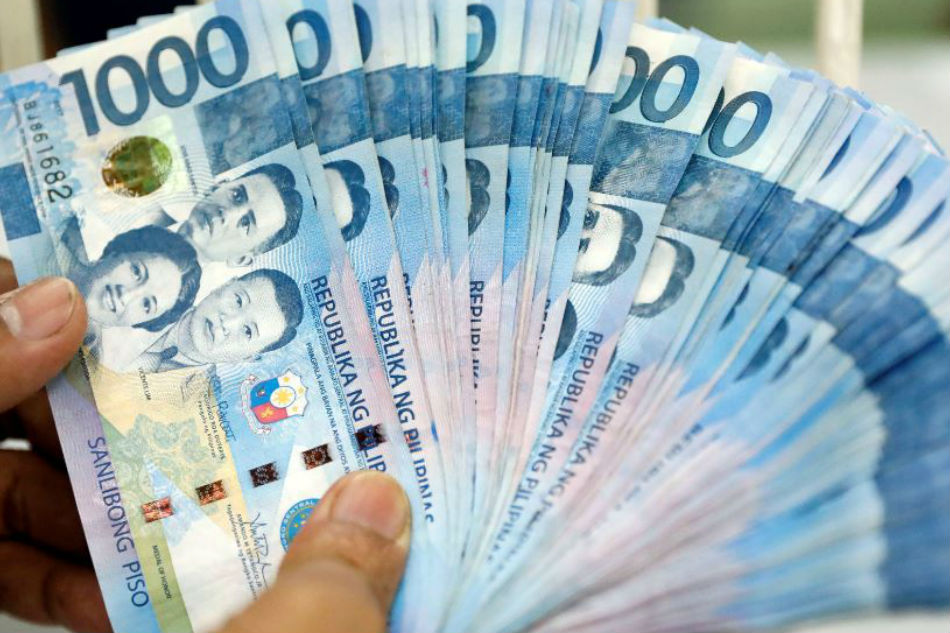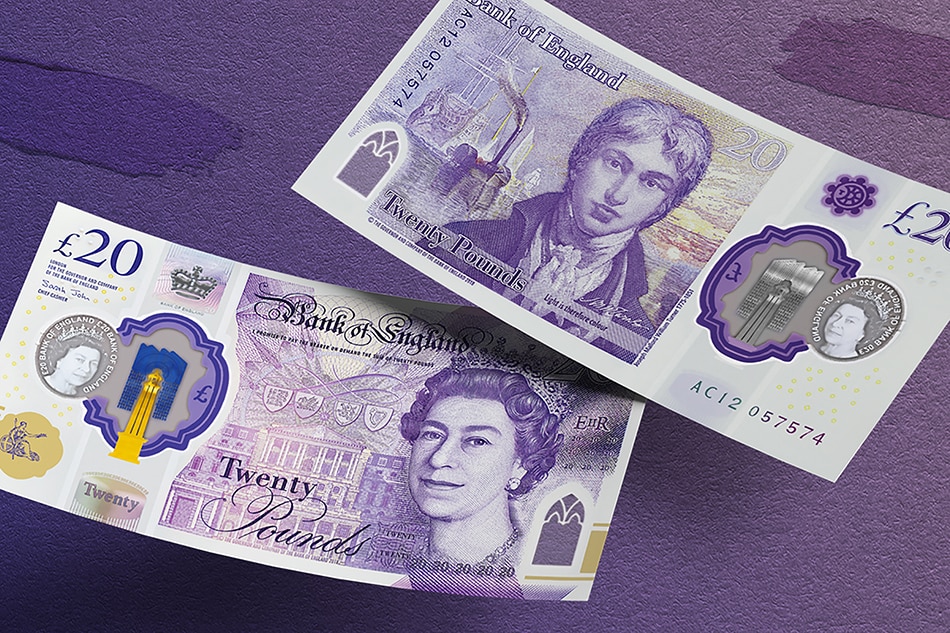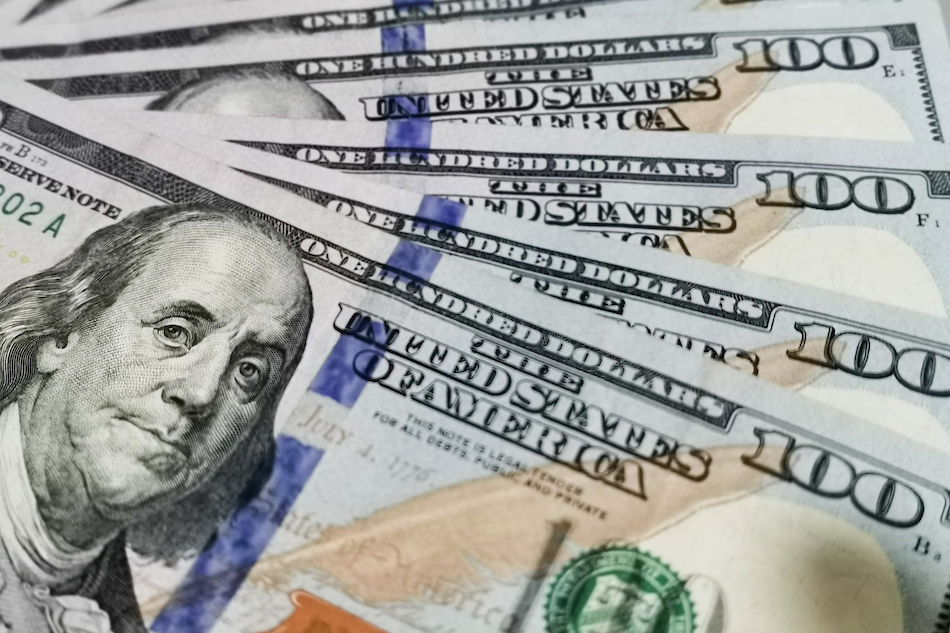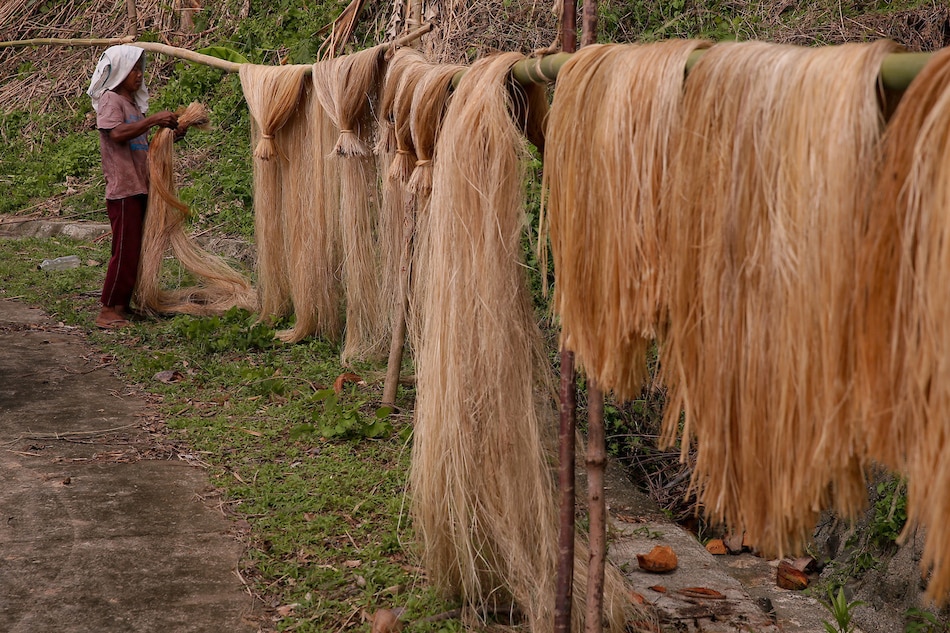‘Plastic’ money better than ‘paper’ bills? Not really, says PH fiber agency | ABS-CBN

Welcome, Kapamilya! We use cookies to improve your browsing experience. Continuing to use this site means you agree to our use of cookies. Tell me more!
‘Plastic’ money better than ‘paper’ bills? Not really, says PH fiber agency
‘Plastic’ money better than ‘paper’ bills? Not really, says PH fiber agency
Art Fuentes,
ABS-CBN News
Published Nov 16, 2021 02:56 PM PHT
|
Updated Nov 17, 2021 07:59 PM PHT
MANILA - As the Bangko Sentral ng Pilipinas (BSP) prepares to test polymer or “plastic” banknotes, a government agency that oversees the country’s fiber industry is contesting the central bank’s claims that plastic is better than paper.
MANILA - As the Bangko Sentral ng Pilipinas (BSP) prepares to test polymer or “plastic” banknotes, a government agency that oversees the country’s fiber industry is contesting the central bank’s claims that plastic is better than paper.
BSP Deputy Governor Mamerto Tangonan recently announced plans to test polymer peso bills, which he said are seen to be more hygienic, durable, secure and environment-friendly than paper bills.
BSP Deputy Governor Mamerto Tangonan recently announced plans to test polymer peso bills, which he said are seen to be more hygienic, durable, secure and environment-friendly than paper bills.
Tangonan earlier said that they expect plastic bills to carry fewer bacteria than paper bills, which is “one of the reasons why we would like to test polymer.”
Tangonan earlier said that they expect plastic bills to carry fewer bacteria than paper bills, which is “one of the reasons why we would like to test polymer.”
The testing would be done on P1,000 banknotes and would start as early as 2022, with the release of these banknotes to the public.
The testing would be done on P1,000 banknotes and would start as early as 2022, with the release of these banknotes to the public.
ADVERTISEMENT
But the Philippine Fiber Industry Development Authority (PhilFIDA) challenged the BSP’s claims about plastic money, saying “using polymer banknotes also has many drawbacks.”
But the Philippine Fiber Industry Development Authority (PhilFIDA) challenged the BSP’s claims about plastic money, saying “using polymer banknotes also has many drawbacks.”
PhilFIDA said polymer banknotes are expensive to manufacture, not as durable or secure as claimed, and definitely not good for the environment.
PhilFIDA said polymer banknotes are expensive to manufacture, not as durable or secure as claimed, and definitely not good for the environment.
The agency represents the country’s abaca industry, which has a stake in keeping Philippine banknotes paper-based. Current “paper” banknotes are made up of 20 percent abaca fiber, with cotton making up the other 80 percent.
The agency represents the country’s abaca industry, which has a stake in keeping Philippine banknotes paper-based. Current “paper” banknotes are made up of 20 percent abaca fiber, with cotton making up the other 80 percent.
Since 2001, the BSP has used this blend of natural fibers in the country’s banknotes. But the BSP has said that it may be time to shift to plastic money.
Since 2001, the BSP has used this blend of natural fibers in the country’s banknotes. But the BSP has said that it may be time to shift to plastic money.
DURABLE? STICKY? FOLDABLE?
One reason the BSP gave is that polymer banknotes last longer.
One reason the BSP gave is that polymer banknotes last longer.
In a forum last Nov. 12, Tangonan said that while plastic bills are more expensive to produce, they are more durable based on the experiences of other countries.
In a forum last Nov. 12, Tangonan said that while plastic bills are more expensive to produce, they are more durable based on the experiences of other countries.
"We got this information from our, other central banks of other jurisdiction, where they gave us the lifetime factor, nakuha namin anywhere from 2.5 to 4.9 x the life of a paper substrate," Tangonan explained.
"We got this information from our, other central banks of other jurisdiction, where they gave us the lifetime factor, nakuha namin anywhere from 2.5 to 4.9 x the life of a paper substrate," Tangonan explained.
"In Canada, sila yung nag report ng 2.5 times lifespan ng polymer nila," the official added.
"In Canada, sila yung nag report ng 2.5 times lifespan ng polymer nila," the official added.
However, PhilFIDA said a study by the US Federal Reserve showed that paper banknotes are also durable, and can last between 6.6 years to as long 22.9 years depending on how often they are used.
However, PhilFIDA said a study by the US Federal Reserve showed that paper banknotes are also durable, and can last between 6.6 years to as long 22.9 years depending on how often they are used.
One reason why plastic bills are more durable, according to the BSP, is that they are waterproof.
One reason why plastic bills are more durable, according to the BSP, is that they are waterproof.
But PhilFIDA said one drawback of plastic bills is they get sticky when wet “and thus relatively less comfortable to hold, count and transfer.”
But PhilFIDA said one drawback of plastic bills is they get sticky when wet “and thus relatively less comfortable to hold, count and transfer.”
“The stickiness of the polymer banknotes will be a problem for sorting machines. With the newer notes, there is a chance that older sorting machines might not be able to sort these out as fast as they would with paper money. These sorting machines will have to be
modified or updated to accommodate polymer bills,” PhilFIDA said.
“The stickiness of the polymer banknotes will be a problem for sorting machines. With the newer notes, there is a chance that older sorting machines might not be able to sort these out as fast as they would with paper money. These sorting machines will have to be
modified or updated to accommodate polymer bills,” PhilFIDA said.
Doing this will be costly for banks and establishments that handle large volumes of banknotes, the fiber agency said.
Doing this will be costly for banks and establishments that handle large volumes of banknotes, the fiber agency said.
Unlike paper bills which can be folded numerous times without breaking, plastic notes can’t be folded either. This would be a problem for Filipinos who often fold their money, PhilFIDA said.
Unlike paper bills which can be folded numerous times without breaking, plastic notes can’t be folded either. This would be a problem for Filipinos who often fold their money, PhilFIDA said.
Tangonan acknowledged that the cited durability of plastic bills in other countries may not apply to Philippine conditions, and that is why they want to conduct a thorough testing.
Tangonan acknowledged that the cited durability of plastic bills in other countries may not apply to Philippine conditions, and that is why they want to conduct a thorough testing.
"We would like to see for ourselves here, under Philippine local conditions, with the way we handle our bank notes, we want to see [what] the actual life span ratio is going to be. Then we will make our conclusion," he said.
"We would like to see for ourselves here, under Philippine local conditions, with the way we handle our bank notes, we want to see [what] the actual life span ratio is going to be. Then we will make our conclusion," he said.
As for the assertion that the 1,000-piso banknote should not be the denomination for the test, Tangonan said “about 37 percent of the currency in circulation is 1,000 peso denomination.”
As for the assertion that the 1,000-piso banknote should not be the denomination for the test, Tangonan said “about 37 percent of the currency in circulation is 1,000 peso denomination.”
“It is the denomination that is most widely circulated,” said the BSP official.
“It is the denomination that is most widely circulated,” said the BSP official.
HARD TO COUNTERFEIT?
Tangonan added that there is another reason why they want to use the P1,000 denomination.
Tangonan added that there is another reason why they want to use the P1,000 denomination.
"It is the most, among the Philippine currencies, it is the most counterfeited. It got the most attempts in terms of counterfeiting. We really want to enhance the security and integrity of our Philippine currency, we want to test it on the 1,000 peso banknote.”
"It is the most, among the Philippine currencies, it is the most counterfeited. It got the most attempts in terms of counterfeiting. We really want to enhance the security and integrity of our Philippine currency, we want to test it on the 1,000 peso banknote.”
PhilFIDA said plastic banknotes are not immune from counterfeiting.
PhilFIDA said plastic banknotes are not immune from counterfeiting.
The agency cited a 2020 news report in Europe where “Romania detained the largest forger of plastic banknotes in the world.”“The investigations have confirmed that, in a relatively short period of time, the leader of the group managed to produce the best counterfeits in Romanian history and became the largest counterfeiter of plastic banknotes in the world," according to an article on euronews.com
The agency cited a 2020 news report in Europe where “Romania detained the largest forger of plastic banknotes in the world.”“The investigations have confirmed that, in a relatively short period of time, the leader of the group managed to produce the best counterfeits in Romanian history and became the largest counterfeiter of plastic banknotes in the world," according to an article on euronews.com
“Hence, both paper and polymer notes can be counterfeited and it is the responsibility of each country’s government printing agency to ensure that their banknotes will be hard to counterfeit,” PhilFIDA said.
“Hence, both paper and polymer notes can be counterfeited and it is the responsibility of each country’s government printing agency to ensure that their banknotes will be hard to counterfeit,” PhilFIDA said.
PLASTIC IS ENVIRONMENT-FRIENDLY?
The BSP also said that polymer banknotes are also more environment-friendly.
The BSP also said that polymer banknotes are also more environment-friendly.
Amid the increasing scarcity of water, energy, and other inputs, the production of banknotes can be made more sustainable by shifting to polymer, the BSP said.
Amid the increasing scarcity of water, energy, and other inputs, the production of banknotes can be made more sustainable by shifting to polymer, the BSP said.
Polymer is also 100-percent recyclable, thus minimizing their impact on the environment, the central bank said. The recycled polymer can be turned into new plastic items.
Polymer is also 100-percent recyclable, thus minimizing their impact on the environment, the central bank said. The recycled polymer can be turned into new plastic items.
But PhilFIDA cited another study which said “plastic banknotes are almost three times worse for the environment than their paper equivalents.”
But PhilFIDA cited another study which said “plastic banknotes are almost three times worse for the environment than their paper equivalents.”
According to this study, producing plastic money releases more than twice the emissions of paper money.
According to this study, producing plastic money releases more than twice the emissions of paper money.
While paper banknotes are composted at the end of their lifespan, plastic banknotes need to be recycled into other objects.
While paper banknotes are composted at the end of their lifespan, plastic banknotes need to be recycled into other objects.
PhilFIDA also said planting abaca can also minimize erosion and sedimentation in coastal areas which are important breeding places for sea fishes.
PhilFIDA also said planting abaca can also minimize erosion and sedimentation in coastal areas which are important breeding places for sea fishes.
Abaca waste materials are also used as organic fertilizer.
Abaca waste materials are also used as organic fertilizer.
“The strong worldwide interest and acceptability for green and organic products made manufacturing companies, especially in the US and
Europe, turn to natural and biodegradable raw materials like abaca,” the agency said.
“The strong worldwide interest and acceptability for green and organic products made manufacturing companies, especially in the US and
Europe, turn to natural and biodegradable raw materials like abaca,” the agency said.
The BSP said the plastic banknotes that will be tested will have the same look as the current 1,000-piso bill but will carry new security features. While the new polymer bills will be smoother than the current paper bills, people will still recognize them.
The BSP said the plastic banknotes that will be tested will have the same look as the current 1,000-piso bill but will carry new security features. While the new polymer bills will be smoother than the current paper bills, people will still recognize them.
The BSP is also reaching out to the Philippine Statistics Authority for the possible use of abaca in birth certificates and other civil registry documents, he earlier said.
The BSP is also reaching out to the Philippine Statistics Authority for the possible use of abaca in birth certificates and other civil registry documents, he earlier said.
- With a report from Warren de Guzman, ABS-CBN News
RELATED VIDEO
Read More:
PhilFIDA
BSP
plastic money
polymer money
banknotes
paper money
abaca
Mamerto Tangonan
fiber industry
ADVERTISEMENT
ADVERTISEMENT





